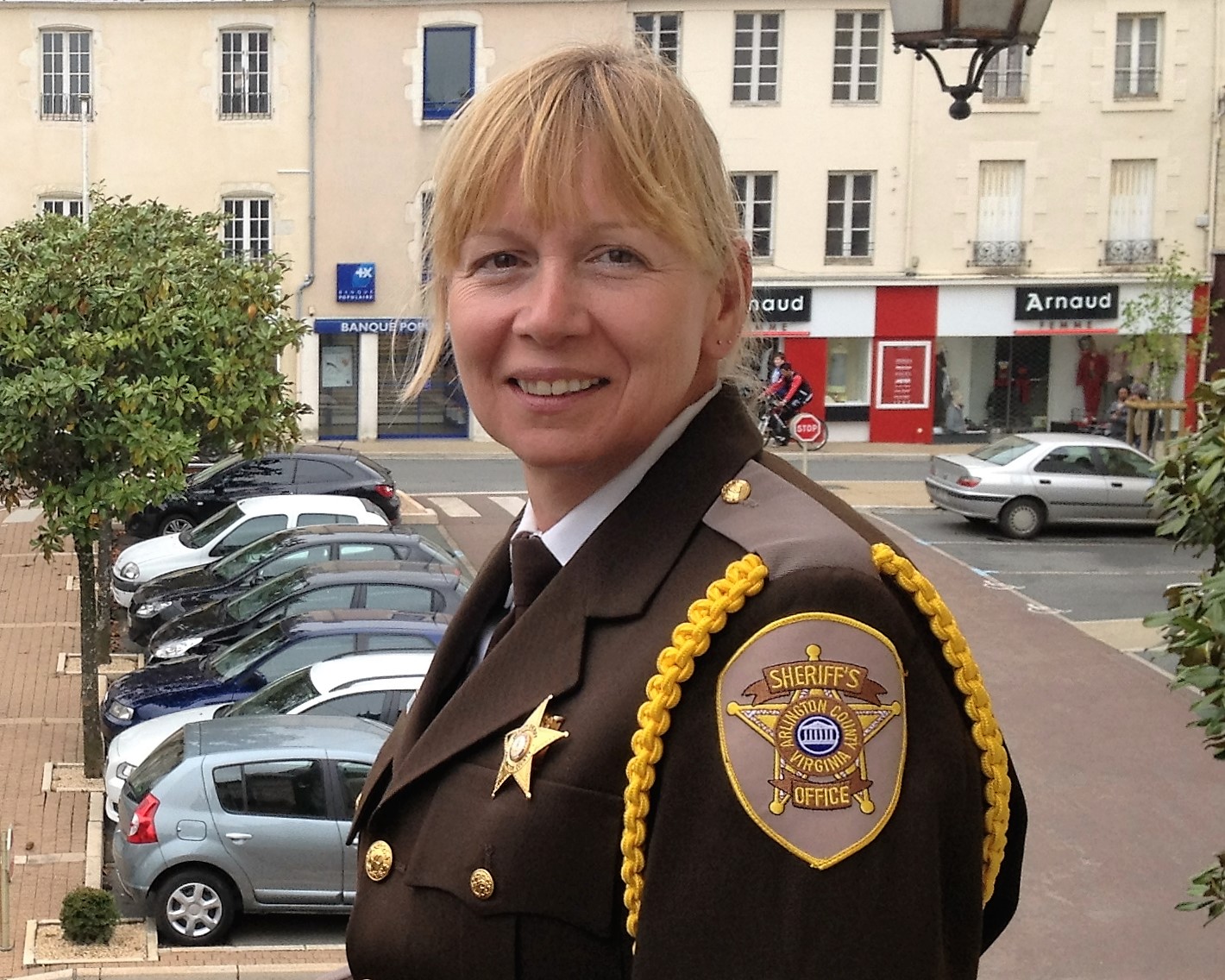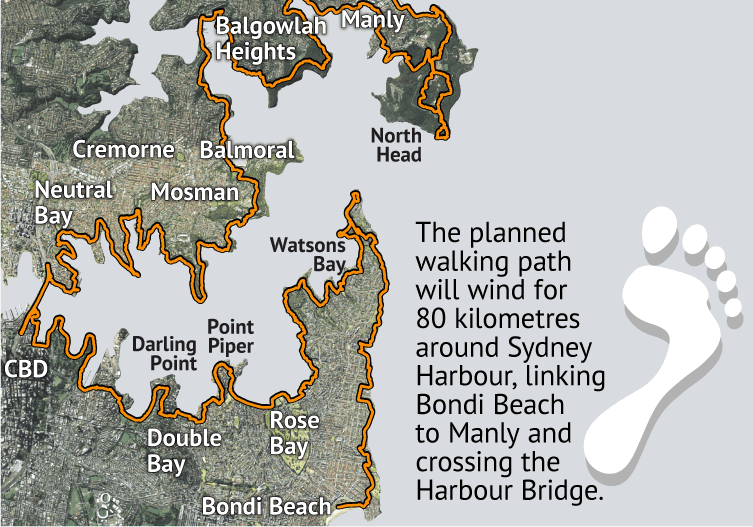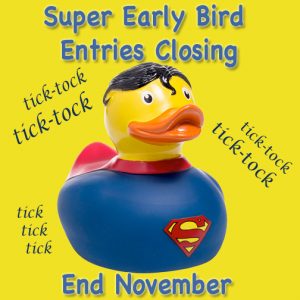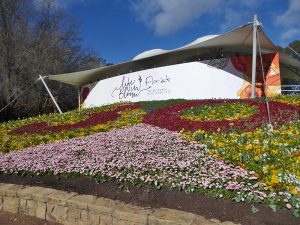 Dolores will be walking with us for the very first time this year. “I met Kathleen and Harry Berg several times at other IML events,” she explains. “I am happy to be able to take part in the 25th anniversary of the Canberra Two Day Walk.”
Dolores will be walking with us for the very first time this year. “I met Kathleen and Harry Berg several times at other IML events,” she explains. “I am happy to be able to take part in the 25th anniversary of the Canberra Two Day Walk.”
As IML Vice-President, Pan Pacific region, Dolores will also be presenting the very first Cooperation Cup medals at our awards ceremony on Sunday. Walkers from Belgium, Germany, Luxembourg, the Netherlands, and the United States will receive the first Cooperation Cup awards here in Canberra.
The Cooperation Cup was jointly established by the IML Walking Association (IML) and the International Federation of Popular Sports (Internationaler Volkssportverband or IVV) earlier this year to promote non-competitive walking. Both international organisations have the aim of encouraging active and worldwide walking.
“It is unfortunate it has taken me this long to make it to your event but I am sure this will not be my last time,” Dolores says. “Australia is a big country with lots to do so my trip of two weeks will not be enough!”
She joined the IVV in 1988 while working at the U.S. Air Force Base in Zwiebrucken, Germany, and raising her son Foster and daughter Petrina. “Walking was an inexpensive activity I could do with my children,” she remembers. “We could get outdoors, see the sights, and meet the people.”
In 1997 she participated in an IML event held in the Winston-Salem area of North Carolina. “This was the one and only IML event that took place in North Carolina,” Dolores recalls. “I ran into a group of British police officers there for the IML walks. I was hooked on the IML walking scene! I’ve never been the same.”
Since then she has walked in Austria, Belgium, Canada, Denmark, France, Germany, Israel, Italy, Japan, Luxembourg, South Korea, Spain, and Taiwan. “I enjoy the IML walking events as I like to be able to travel and meet the local people and cultures.”
She has walked 50km seven times in the Netherlands “then I smartened up” and walked 40km in her eighth event in that country. “I’m going to retire in March 2017 and plan on doing more than the two or three walks a year I’ve been doing while working full-time.”
A member of the American Volkssport Association (AVA), Dolores also helps organise the IML Freedom Walk in Arlington, Virginia, and has walked in all 14 Freedom Walks held to date. Just like our walk, the Freedom Walk features the sights of a national capital — in this case Washington, D.C.
As a volunteer on the IML Board, she helps out with the IML newsletter and social media. “Hopefully, when I’m retired, I can step it up to assist IML President Marc Muller who is doing so much for the organisation.”
She has completed the AVA’s Centurion Achievement Challenge twice already and is working towards her third award patch. The Centurion program requires a walker to participate in 100 IVV events in a single calendar year.
“Walking is my passion,” states Dolores, “but I run an occasional half- or full-marathon. I’m not breaking any running records but my job requires a certain amount of physical fitness.” She has been employed with the Arlington County Sheriff’s Office for the past 24 years. “It has been a challenging time for law enforcement in the United States over the past few years,” Dolores notes. “I am thankful for my time of service but feel it is time to let the younger law enforcement officers take on the new challenges.”
In her leisure time she likes to garden and read as well as do a little skiing. Dolores is also a grandmother of six and has encouraged her grandchildren to walk with her. “I enjoy time walking stateside AVA events with them. All but the youngest have their IVV walking books,” she says proudly.
Her oldest grandson, Devin aged 14, really likes the Volksbiking IVV-sanctioned events. “In 2014 we completed the C&O Canal route of 185 miles from Cumberland, Maryland, to Georgetown, Washington, DC, in five days,” she smiles. “Great memories.”





 You are invited to participate in the 27th Canberra Walking Festival!
You are invited to participate in the 27th Canberra Walking Festival!
 I first walked the Canberra Two Day Walk (CTDW) in 2003. I had recently returned from three years in the USA, where I had cheered on my husband in his first marathon. I discovered that there were plenty of people who walked marathons in the United States and I felt inspired to give one a go myself, so was looking for a suitable event in Australia. I came across a CTDW brochure for the event at the bowling alley in Tuggeranong, less than two months before the event and was immediately enthused to enter. The 30km distance requirement for my age was a little daunting but I was not deterred. How hard could it be? After all, it was much less than a marathon. Famous last words!
I first walked the Canberra Two Day Walk (CTDW) in 2003. I had recently returned from three years in the USA, where I had cheered on my husband in his first marathon. I discovered that there were plenty of people who walked marathons in the United States and I felt inspired to give one a go myself, so was looking for a suitable event in Australia. I came across a CTDW brochure for the event at the bowling alley in Tuggeranong, less than two months before the event and was immediately enthused to enter. The 30km distance requirement for my age was a little daunting but I was not deterred. How hard could it be? After all, it was much less than a marathon. Famous last words!

